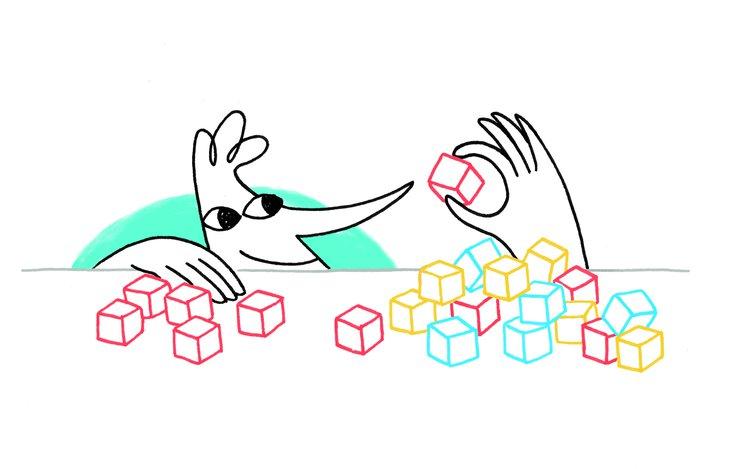Learn / Guides / CRO glossary
Micro-conversion: a definition
What is a micro-conversion?
Micro-conversions are the completion of small steps or secondary actions by a website visitor that indicate that they are going to convert. Though not considered part of a site’s overall conversion rate, micro-conversions are a strong indicator of the effectiveness of your funnel.
Conversion rate optimization (CRO) professionals study micro-conversions to spot weaknesses in their sales or marketing funnels (such as pages where users drop off without reaching the final conversion page). Optimizing for micro-conversions can improve the user experience and increase the number of visitors who make it through the entire funnel, thereby increasing total conversions.
Examples of micro-conversions
If you needed to shop online to buy a birthday gift for your 10-year old niece, you would follow a path (often called an ‘ecommerce customer journey’) that looks something like this:
Visit the website
View the category pages (e.g., kids’ toys)
View a sub-category page (e.g., toys: ages 8-12)
View an individual product page (e.g., Science Kit for Kids)
Add to the product to your shopping cart
Proceed to checkout
Enter your delivery address
Select shipping (e.g., 2-day express delivery)
Enter your payment information
Place the order
Steps 2-9 are micro-conversions (also called process milestones), and step 10 is the macro-conversion (also called the primary conversion, or, more simply, the conversion). Of course, you may skip some of those steps by searching for a specific product or product line, but your path would still make up a series of micro-conversions that lead to a macro-conversion in the end (if you decide to buy).
Why micro-conversions are important
Studying micro-conversions helps marketers spot weak links in their sales funnel—those pages where people drop off and (ultimately) fail to convert. For example, if 8 out of 10 visitors leave your ecommerce site when they reach the sub-category page, you’ll want to study that page and find ways to make it more appealing.
Fixing the weakest link in your sales funnel (e.g., reducing that 80% drop-off to 40%) usually means an increase in conversions, since you’ve made UX improvements by addressing the barrier that was blocking your visitors from reaching the finish line.
Micro-conversions can be especially helpful for low-traffic websites
Micro-conversions are important for all websites regardless of how much traffic they get, but studying micro-conversions can be especially helpful for low-traffic or low-conversion sites’ overall conversion optimization.
Why? If your ecommerce website only gets a handful of conversions per day, that doesn’t give you a lot of data to study when looking at macro-conversions alone. However, you’ll have quite a bit more data to work with if you look at all the micro-conversions that take place during the customer journey. You can then identify pain points, and focus on problematic pages within the funnel and on elements that block or distract people, and work to optimize them to reach your conversion goals.
How to track micro-conversions
You can track micro-conversions by using a web analytics platform like Google Analytics, which lets you log conversions either as GA ‘events’ or ‘goals’. You can also track micro-conversions by using behavior analytics tools like those of Hotjar, which show you how your users actually use your website, giving you more precise insight into what to change, and when to change it.
Tracking micro-conversions in Google Analytics
You can track micro-conversions in Google Analytics by adding each micro-conversion as an event or by triggering responses when you use the Google Tag Manager. When you add micro-conversions to your data in GA, you can compare each conversion with other metrics—like traffic sources, page views, or homepage and landing page visits—to see how the data correlates, and to find out when the metrics cross paths during the customer journey.
Another way to use GA to track micro-conversions is to assign each step in the customer journey as a goal. As website visitors reach each goal on their path to conversion, you can track and measure them individually and set up a funnel within GA to see where visitors are dropping off, whether it be at the checkout page or earlier in the customer journey.
4 steps to tracking micro-conversions with behavior analytics tools
If you want to optimize micro-conversions, you’ve got to figure out what’s not working—and to do that, you’ll need to do some research. The following steps will help you diagnose the problems so you can work toward a solution.
Identify the problem pages: a traditional analytics tool like GA or Hotjar’s tool will help you identify the pages with the highest drop-off rates: those are the ones you want to study in depth.
See in aggregate: placing on the problematic page(s) show you where the majority of your users click, scroll, and hover their mouse pointers. This will give you a good idea of how visitors interact—or fail to—with any number of page elements.
Watch session recordings: let you watch a screen recording of individual (anonymized) visitor sessions so you can see what people are actually doing on each page, and particularly observe how they behaved before abandoning one.
Gather feedback: setting up lets you hear directly from your users and customers, so there’s no guesswork in trying to figure out why they’re leaving. Ask simple, open-ended questions, such as:
What’s missing from this page?
What’s stopping you from continuing?
What were you looking for?
How can we help you through the checkout process?
🔥Pro tip: whatever your primary goals of the site are—whether you're optimizing for micro- or macro-conversions—understanding what your website visitors are doing and how are they behaving is a crucial first step. If you need help getting started, check out:


